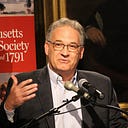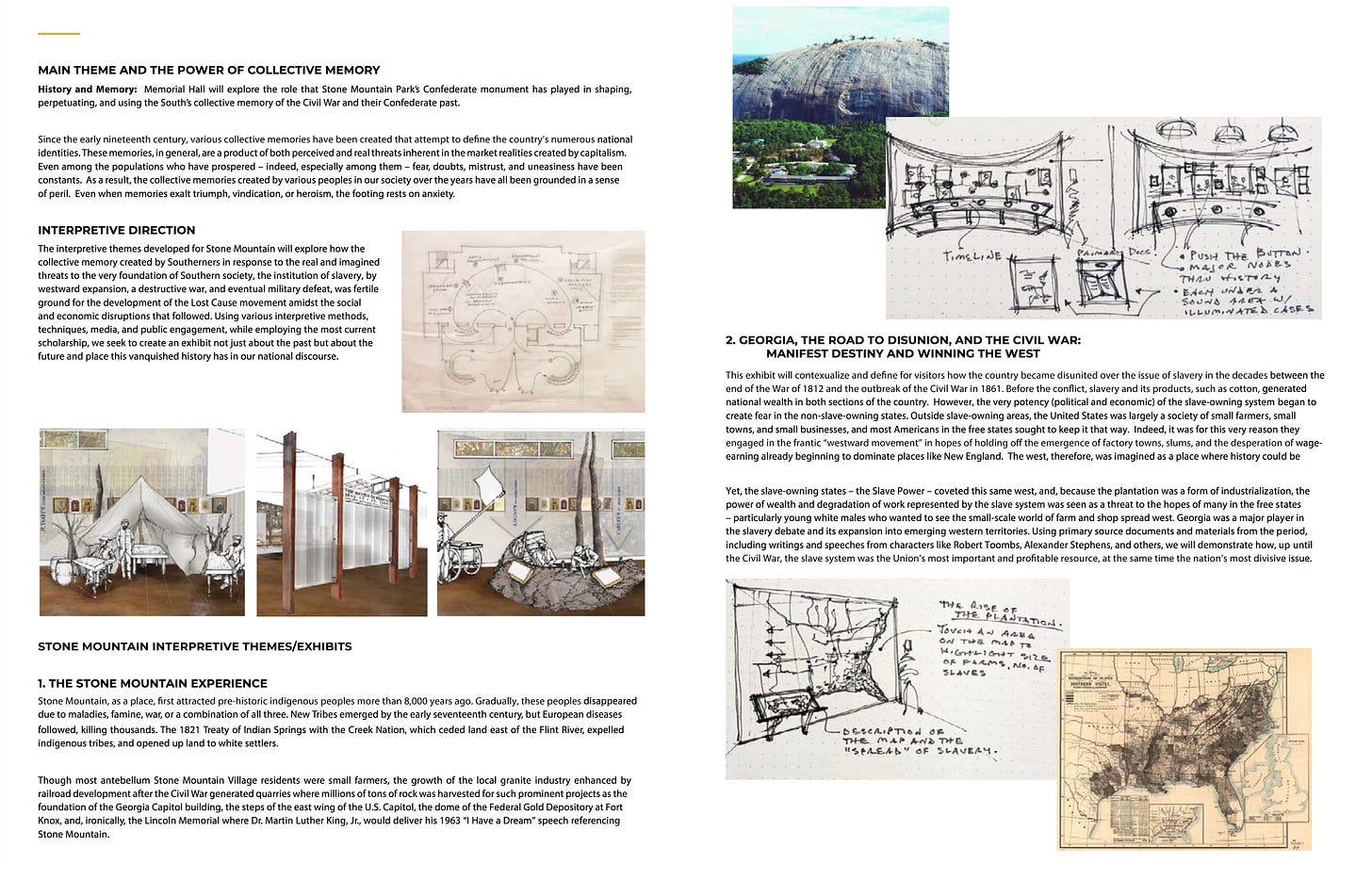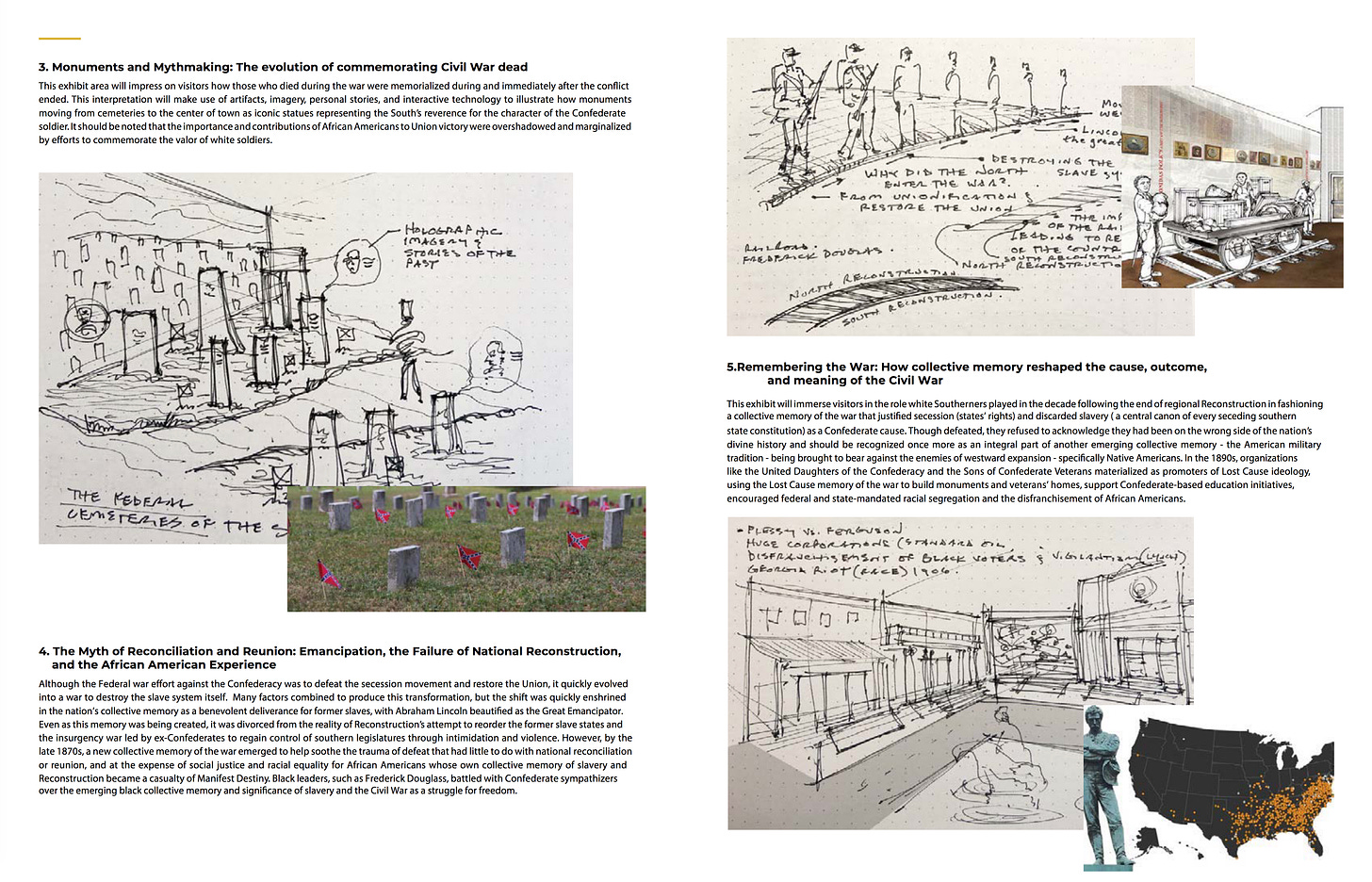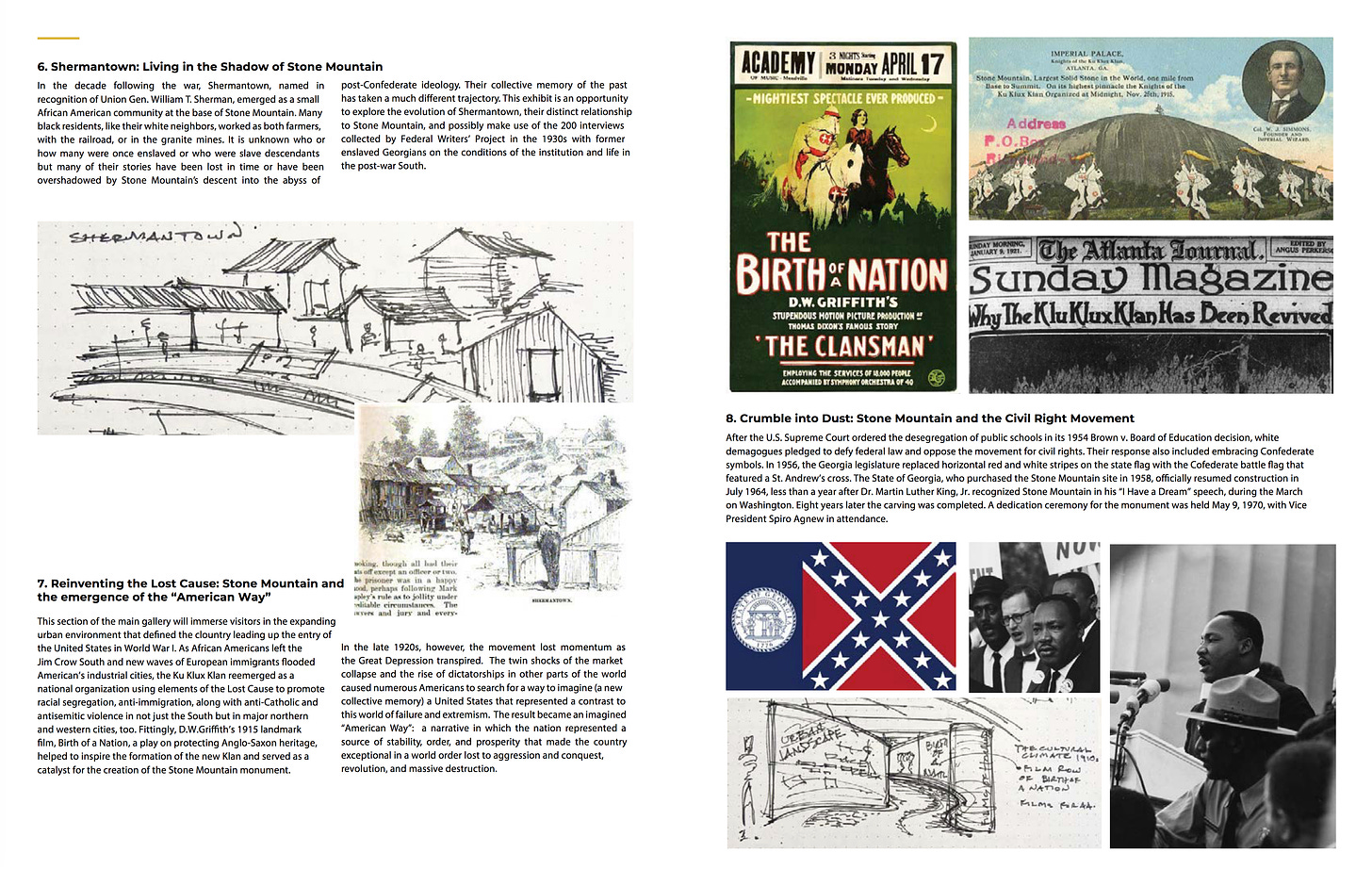Earlier this week the Stone Mountain Memorial Association selected Warner Museums to design a new interpretive space for the controversial relief sculpture and surrounding community.
There are plenty of people who would prefer blasting the massive sculpture of Confederate president Jefferson Davis and generals Robert E. Lee and Thomas J. “Stonewall” Jackson off the side of the mountain. I can certainly appreciate such a sentiment, but right now it is simply not possible given the politics of Georgia.
Given this reality, we need to think about what can be done to reinterpret the site. This is no tall order. Since its inception in the early twentieth century to its completion in 1970, Stone Mountain has served as a rallying place for the Ku Klux Klan and other white supremacists. Even today, white nationalists continue to embrace Stone Mountain and its vindication of the Confederacy’s Lost Cause.
A healthy skepticism is entirely justified surrounding this project given Georgia’s politics and the challenges associated with interpreting controversial sites like Stone Mountain. It’s not just the sculpture itself that needs to be reinterpreted, but the larger story of white supremacy and violence that it inspired and justified for so many throughout the twentieth century.
[Click here for a link to the proposal.]
However, having reviewed the winning company’s proposal, I am encouraged by what I have read. Consider their vision statement:
We recognize the history of Stone Mountain is not so much a Civil War story as it is a story about the memory of the Civil War. And while there are many museums dedicated to telling the story of the Civil War and the Confederacy, there is no museum solely dedicated to telling how role that monuments to the Confederacy and its leaders, like the carving on Stone Mountain, have played in shaping how the public has remembered the Civil War. Since Stone Mountain is the world’s largest Confederate monument, it is a story that cannot be told as anywhere else.
The appreciation of the distinction between history and memory is absolutely crucial to any proposed reinterpretation of Stone Mountain. Here are a few design proposals for the new museum.
I am also encouraged to see that attention will be given to reimagining our communities and civic spaces. This shouldn’t be a place where we simply reflect on a divisive and painful past.
To realize the full potential of our communities, build on our past, and chart paths forward, we need to be able to imagine what better worlds would look like. Civic imagination enables communities to think creatively by connecting with others in new ways and tackling challenging issues through imagination. This exhibit encourages people to share their memories, dreams, and hopes with each other. Such diverse perspectives provide the social foundation for civic life, and to talk across their differences. It explores how various peoples and cultures across the country and around the world have used the power of storytelling and imagination to envision real world spaces and real-world blueprints for the communities of tomorrow. Through large screen interactive monitors that record and shares their plans, visitors, as cultural architects and civic agents, will be able to envision their own idea of the future. This information will be gathered and available to other visitors to Stone Mountain or online through the Stone Mountain website. This project can also be administered through workshops and educational programming.
No doubt the interpretive space will continue to evolve throughout the process.
It’s important to understand the ways in which the Lost Cause narrative reinforced and justified legal segregation and resistance against civil rights efforts, but visitors also need to understand Black Civil War memory. They need to appreciate the extent to which a memory of emancipation and military service functioned as a catalyst for African Americans in their push for equal rights.
In addition, I would suggest that this site needs to bring its interpretation as close to the present day as possible. Stone Mountain is not simply a relic of the past. It continues to be seen as a sacred space and shrine to white supremacy for far too many people.
This disturbing fact points to the fundamental challenge that Warner Museums and the broader community will have to face moving forward.
No amount of reinterpretation can defuse the power of this sculpture. In the end, visitors will have to look up to see this sculpture. It towers above and overwhelms everything in its immediate surroundings.
While I support this project moving forward, I do so with a full understanding that not everyone will jump on board. Nor should they.
Some will see the very act of reinterpretation simply as a means to extend the life of a commemorative site that deserves to be destroyed. They are not entirely wrong. Others will see it as merely a band aid to an open wound that will continue to cause pain and they are not entirely wrong either.
If ever a healthy dose of humility was in order in connection to a proposed museum, this is it.
Ultimately, the process of reinterpretation, the final product, and the visitor experience will reflect our collective past, present, and possible futures.
Please note that the ability to post comments will be limited to paid subscribers beginning on December 1.









It isn’t just “important to understand the ways in which the Lost Cause narrative reinforced and justified legal segregation and resistance against civil rights efforts,” it is demandingly imperative. If people won’t realize the long standing and ongoing effects of the Civil War mentality, I don’t see how we can ever heal from it. Ever.
I sincerely hope they move forward as they say they intend to do. But actions speak louder than words. They still have a day to have dedicated as a confederate memorial day and over a year ago they stated they had plans to move the confederate flags to the back of the park. Nothing has begun on that front, was it all just words? I hope not. I know nothing changes overnight, but at Stone Mountain, no actual changes have been made. We'll see.